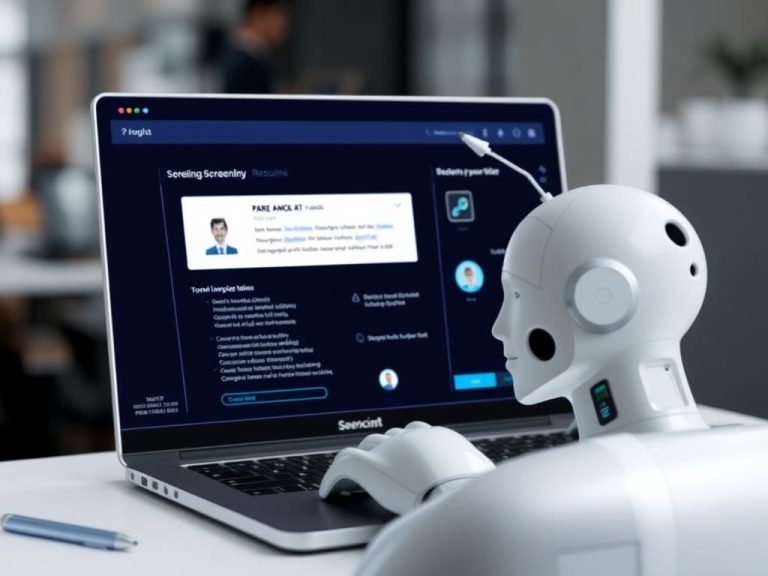In today’s competitive business environment, the efficiency of onboarding processes can significantly impact employee engagement and productivity. Companies are increasingly turning to artificial intelligence (AI) tools to streamline their onboarding procedures, transforming the way they integrate new hires. With AI-driven solutions, organizations can reduce time spent on administrative tasks, enhance personalized experiences, and ensure that new employees feel welcomed and equipped from day one.
Understanding the Onboarding Process
The onboarding process is crucial for aligning new hires with company culture, expectations, and operational protocols. A structured onboarding program can include various components:
- Orientation sessions
- Training programs
- Mentee or buddy systems
- Administrative paperwork
- Performance goal setting
However, traditional methods often lead to bottlenecks, overwhelming HR departments and new employees alike.
Why AI is a Game Changer for Onboarding
Employing AI tools in onboarding processes can transform how organizations manage and execute these fundamental steps. Here are several ways AI can enhance onboarding:
1. Automation of Administrative Tasks
AI can automate repetitive tasks such as document management and data entry, leading to significant time savings. This allows HR professionals to focus on more strategic activities. Examples include:
- Automatic generation of offer letters
- Digital completion of tax forms
- Streamlined background checks
2. Personalized Learning Experiences
AI can analyze a new hire’s background and skills to create tailored training programs. Machine learning algorithms can suggest specific training modules based on the employee’s role and previous experiences:
- Identification of skill gaps
- Recommendations for resources such as videos and articles
- Self-paced learning paths
3. Virtual Assistants for Real-Time Support
Chatbots and virtual assistants can provide real-time support to new hires, answering queries and guiding them through the onboarding process. Some advantages include:
- 24/7 availability
- Instantaneous responses
- Consistency in information dissemination
4. Enhanced Engagement Through Gamification
Integrating gamification into the onboarding process can boost engagement and retention levels. AI can help design interactive experiences, such as:
- Quizzes and assessments
- Leaderboards showcasing achievements
- Reward systems for completing training milestones
AI Tools for Streamlined Onboarding
Numerous AI tools are available that specifically target improving the onboarding experience. Below are some noteworthy solutions:
| Tool | Features | Best For |
|---|---|---|
| Chatbot Platforms (e.g., Talla, Mya) | Real-time Q&A, scheduling assistance | Quick information dissemination |
| Learning Management Systems (e.g., Docebo, TalentLMS) | Personalized learning paths, analytics | Structured training programs |
| HR Automation Tools (e.g., BambooHR, Workday) | Document automation, onboarding checklists | Streamlining administrative tasks |
Implementing AI in Your Onboarding Process
To effectively integrate AI into the onboarding process, consider following these steps:
- Assessment: Identify pain points in your current onboarding process.
- Research: Explore various AI tools and their applicability to your organization.
- Pilot Program: Initiate a small-scale implementation to gauge effectiveness.
- Feedback: Collect feedback from new hires and HR teams for improvement.
- Scale: Roll out the AI solution organization-wide based on pilot results.
Measuring Success
Once AI tools are implemented, measuring their impact is critical. Consider the following metrics:
- Time to productivity
- Employee retention rates
- New hire satisfaction scores
- Quality of training completions
Using these metrics can provide insights into how effectively the AI tools are enhancing the onboarding experience.
Challenges and Considerations
While the benefits of AI are compelling, organizations must also be aware of potential challenges:
- Data Privacy: Ensure compliance with data protection regulations when using AI tools.
- Integration: AI solutions must seamlessly integrate with existing HR systems.
- Cultural Fit: AI tools should complement your company culture and values.
Conclusion
Incorporating AI tools into the onboarding process can revolutionize how organizations introduce new hires, making the experience more efficient, welcoming, and effective. By embracing technology, companies can build stronger teams, foster engagement, and set new employees up for success from the very start. As AI continues to evolve, those who adapt and integrate these tools will likely lead the way in talent acquisition and management.
FAQ
What are AI tools for onboarding?
AI tools for onboarding are software solutions that utilize artificial intelligence to automate and enhance the employee onboarding process, making it more efficient and personalized.
How can AI streamline the onboarding process?
AI can streamline the onboarding process by automating repetitive tasks, providing personalized training experiences, and offering real-time assistance to new employees.
What are the benefits of using AI in onboarding?
The benefits of using AI in onboarding include reduced time to productivity, improved employee engagement, and a more consistent onboarding experience across the organization.
Can AI tools help with compliance during onboarding?
Yes, AI tools can help ensure compliance during onboarding by automating the completion of necessary paperwork and providing reminders for mandatory training.
Are AI onboarding tools suitable for all company sizes?
Absolutely! AI onboarding tools can be tailored to fit the needs of companies of all sizes, from startups to large enterprises, ensuring a scalable solution.
How do I choose the right AI onboarding tool?
To choose the right AI onboarding tool, consider factors such as ease of use, integration capabilities with existing systems, customization options, and support services offered.




